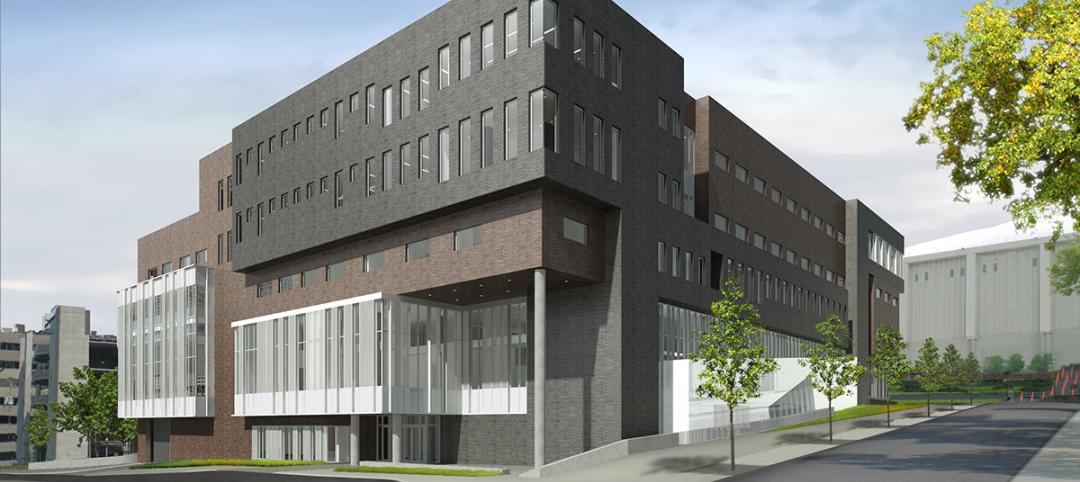Construction work is demanding—both physically and mentally—and the likelihood of injury or disability is higher than other sectors. As an industry, we have done an excellent job at emphasizing and improving site safety so that everyone goes home safe every day. But what about going home healthy?
While formal regulations, planning, and union collective bargaining agreements have helped address many health and safety risks, more holistic health and wellness issues, such as dehydration, weight management, poor air quality, and stress, are less commonly addressed.
New research on wellness in the construction sector highlights interventions that could be effective in addressing these issues.
1. Hydration stations. Dehydration can cause cognitive impairment and acute illness, and is linked with long-term health consequences like kidney stones and bladder cancer. Convenient, visible access to water is often considered the first step in addressing worker dehydration. In fact, many municipal and state laws require construction companies to supply water on their jobsites. Structure Tone’s Boston office not only supplies water to its jobsites, but goes one step further by delivering it from a hard-plumbed water source, which reduces the chance for contamination associated with a standard, five-gallon jug water dispenser system.
2. Access to healthy food. The prevalence of overweight employees within the construction industry is significantly higher than the general adult population. This has obvious health implications, but also business implications. Obesity can increase the risk of workplace disability, as well as decrease work ability and performance. Leading construction companies are addressing this issue head on. Turner Construction, for example, has implemented “wellness trailers” equipped to not only handle immediate medical responses, but also to help address chronic health issues such as obesity and Type 2 diabetes by providing healthy food and educational resources. Similarly, BCCI Construction recognizes the limitations of food storage on jobsites and has started providing food and beverages that are low in sugar and high in protein.
3. Space and tools for mindfulness. Workplace stress is linked to depression, anxiety, and even suicide. Empirical research on mindfulness in the construction sector supports the proposition that it could be beneficial to workers. Lendlease, for example, has recognized the importance of integrating mental health into its culture. Acknowledging that construction employees are more likely to experience high levels of stress, anxiety, and depression, they introduced Wellbeing Leave in 2015, which gives all employees one day every four months to address any health and wellbeing needs. Almost 70% of Lendlease’s employees used their Wellbeing Leave in 2018.
4. Improved air quality. Many construction companies use air quality monitoring and mitigation efforts such as water trucks, wind break installation, and stockpile coverings to manage air quality. Innovative companies, such as Pepper Construction, are going a step above by also addressing air quality within site trailers. Pepper’s trailers include such features as low-VOC/Greenguard Gold-certified acoustical panels and sheetrock, green cleaning supplies, walk-off mats, and operable windows that can provide fresh air.
Wellness in construction: The WELL Building Standard
Wellness features like these on construction sites aren’t just a minor workplace perk but a competitive advantage. Occupational injuries and illnesses cost the global economy over $1.25 trillion, with a disproportionately high rate of recorded accidents in the construction industry. Physically healthier, more mindful employees may be a key component to addressing this issue.
Luckily, construction organizations don’t have to start from scratch. Many of the wellness features outlined in the WELL Building Standard, such as those relating to the mind, nourishment, water, air, and physical activity, can be implemented outside of the typical corporate office on worksites and within construction trailers. Some forward-thinking construction companies like Structure Tone and BCCI have pursued WELL certification for their corporate offices to navigate and institute the associated behavioral changes before migrating those health and wellness opportunities to the jobsites.
BCCI has recently started surveying employees on jobsites to help identify the key impacts and strategize what wellness features to implement. What’s more, the Sustainability Construction Leaders group—sustainability leaders from national construction firms—and the resources behind the wellness building movement are ready to further help the industry integrate healthy workplace practices for construction workers.
About the Authors
Stephanie Timm, PhD, Senior Director, Delos; Whitney Austin Gray, PhD, Senior Vice President, Delos; Kena David, Director of Sustainability, BCCI Construction; Halie Colbourne, Sustainability Associate, BCCI Construction; Jennifer Taranto, Director of Sustainability, Structure Tone
Related Stories
| Dec 27, 2011
Nova completes $60M Clearwater Conference Center
Comprising an entire city block, the 450,000 sq. ft. facility features over 400 meeting rooms, six theaters, a full-service health spa, complete with an indoor running track, and a commercial kitchen that can efficiently accommodate over 1,000 diners
| Dec 27, 2011
BD+C's Under 40 Leadership Summit update
The two-day Under 40 Leadership Summit continued with a Leadership Style interactive presentation; Great Solutions presentations from Under 40 attendees; the Owner’s Perspective panel discussion; and the Blue Ocean Strategy presentation.
| Dec 27, 2011
Suffolk Construction celebrates raising of Boston Tea Party Ships & Museum cupola
Topping off ceremony held on 238th Anniversary of Boston Tea Party.
| Dec 27, 2011
State of the data center 2011
Advances in technology, an increased reliance on the Internet and social media as well as an increased focus on energy management initiatives have had a significant impact on the data center world.
| Dec 27, 2011
USGBC’s Center for Green Schools releases Best of Green Schools 2011
Recipient schools and regions from across the nation - from K-12 to higher education - were recognized for a variety of sustainable, cost-cutting measures, including energy conservation, record numbers of LEED certified buildings and collaborative platforms and policies to green U.S. school infrastructure.
| Dec 21, 2011
DOE report details finance options for PV systems in schools
The report examines the two primary types of ownership models used to obtain PV installations for school administrators to use in selecting the best option for deploying solar technologies in their districts.
| Dec 21, 2011
AIA Chicago & AIA Chicago Foundation 2011 Dubin Family Young Architect Award announced
The Dubin Family Young Architect Award is bestowed annually and recognizes excellence in ability and exceptional contributions by a Chicago architect between the ages of 25 and 39.
| Dec 21, 2011
Few silver linings for construction in 2012
On the brighter side, nearly half of respondents (49.7%) said their firms were in at least “good” financial health, and four-fifths (80.2%) said their companies would at least hold steady in revenue in 2012.
| Dec 21, 2011
BBI key to Philly high-rise renovation
The 200,000 sf building was recently outfitted with a new HVAC system and a state-of-the-art window retrofitting system.
| Dec 20, 2011
Gluckman Mayner Architects releases design for Syracuse law building
The design reflects an organizational clarity and professional sophistication that anticipates the user experience of students, faculty, and visitors alike.

















